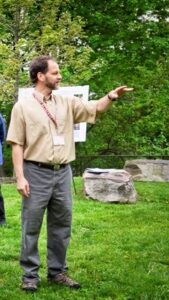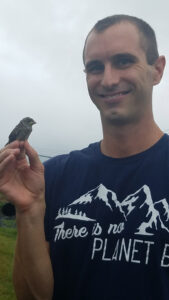Notice of Online Archive
This page is no longer being updated and remains online for informational and historical purposes only. The information is accurate as of the last page update.
For questions about page contents, contact the Communications Division.
Prof. David Brandes and Prof. Mike Butler find some birds more vulnerable to bird strikes
No one likes coming across a dead warbler, cedar waxwing, or hummingbird outside a campus building. Especially not Mike Butler, associate professor of biology, and David Brandes, professor of civil and environmental engineering.

David Brandes

Mike Butler
Birds often die after flying into windows, either instantly from the impact or after becoming injured. They don’t see glass as a solid object; instead they see the reflection of sky and vegetation or the open space on the other side. Butler and Brandes and their research students have been ongoing advocates for efforts to prevent bird mortality on campus.
Most recently, Butler and Brandes contributed to a study published in Conservation Biology., which has received coverage by Audubon and The Wildlife Society.
Butler and Brandes contributed bird-death data as part of the Ecological Research as Education Network, an organization that brings together universities and colleges to collaborate on projects.
The findings indicate that certain species of birds are more vulnerable to building collisions, including black-throated blue warblers and white-breasted nuthatches. The data also found that migratory birds, insect-eating birds, and woodland birds were more likely to strike a building.

